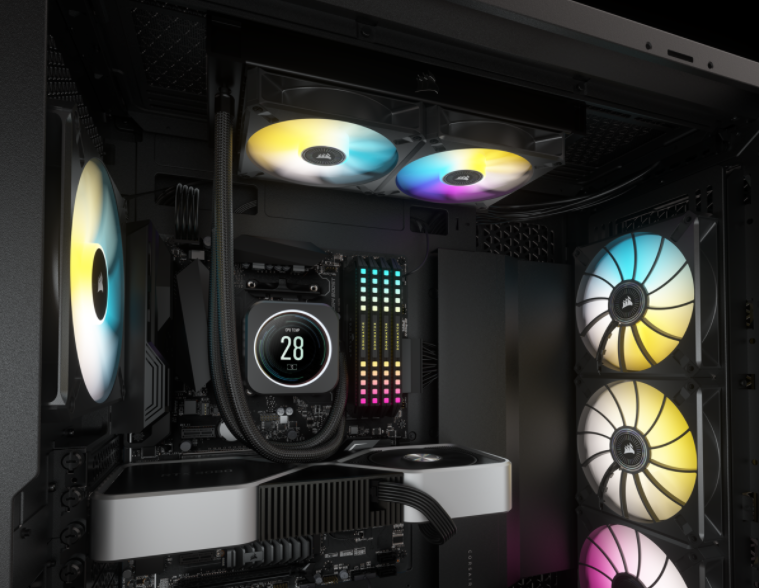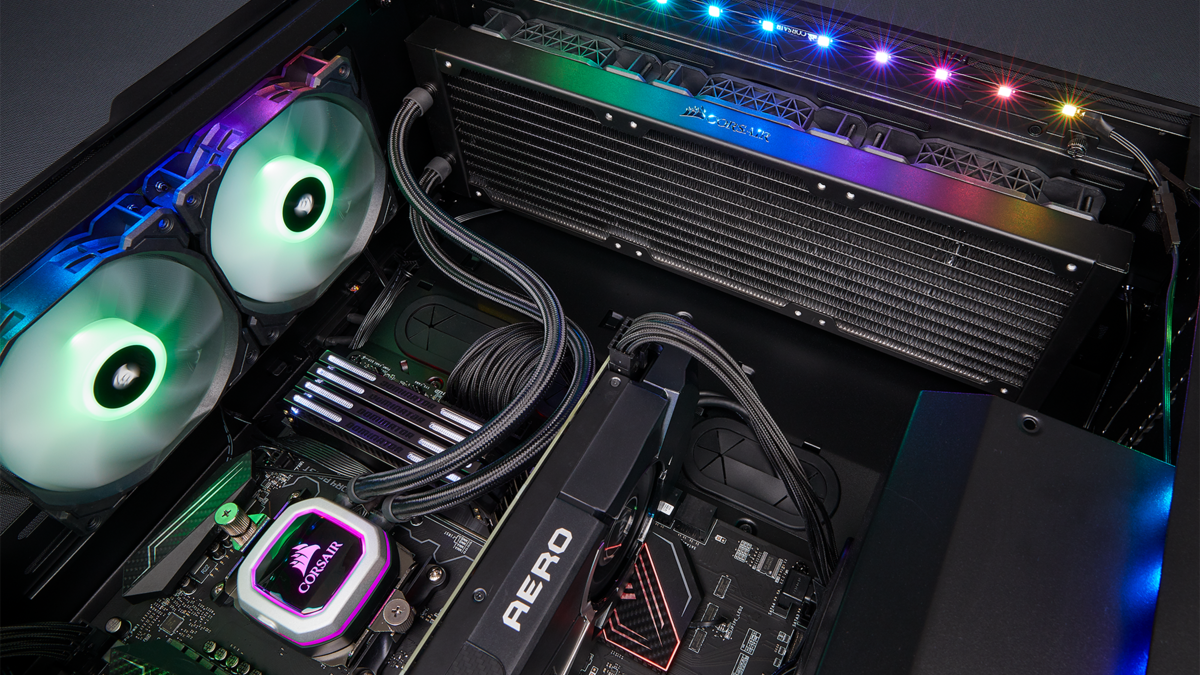Liquid cooling is an efficient way to keep a PC’s central processing unit (CPU) cool. Modern all-in-one (AIO) liquid coolers can offer better efficiency than air coolers and are easy to install.
Most water cooling kits come with everything required for the installation, including the radiator tubes and water block. The water block with a cold plate at the bottom sits on the CPU when it’s installed. It’s filled with water to absorb the heat generated by the CPU. Once the water has absorbed the heat, it’s pumped through a hose to a radiator, where it’s cooled and sent back to the CPU via another hose.
Choosing a water cooling kit for PC

Many reputable brands, like Thermaltake, Cooler Master, and NZXT, make liquid cooling kits in various sizes with different features. Liquid cooling kits come in sizes between 120 millimeters up to 360 millimeters, with features like RGB lighting and OLED screens.
Choosing the right water cooling kit depends on many factors. The kit should be compatible with your PC’s CPU, and it should fit in your PC case. It should also provide adequate cooling for the system. Generally, 240-millimeter options, like the Cooler Master MasterLiquid ML240, fit into most Standard ATX cases and provide far better cooling than smaller 120-millimeter options, like the Asus ROG RYUO. Larger 360-millimeter AIOs, like the Arctic Liquid Freezer II, often provide the best cooling, but they take up more space and are often more expensive than the smaller options.
Planning the installation
Most PC cases have multiple mounting spots for the radiator. You can often mount the radiator on the front, top, or bottom of the case. It’s best to decide where the radiator will fit beforehand to avoid issues. Once you’ve decided where to install the radiator, you can mount the fans onto it using the long screws provided. Modern fans usually have an arrow or some type of marking to identify the direction of the airflow.
Most AIO coolers come with different mounting brackets to fit Intel or AMD processors. Each type of bracket is only compatible with one type of CPU, and it’s critical to use the correct bracket to mount the water block.
The mounting bracket fastens to the CPU using a backplate on the back of the motherboard. Some motherboards will already have a compatible backplate installed, while others will require a new backplate to install the AIO. Most water cooling kits come with an Intel or AMD compatible backplate for easy installation. Many modern cases allow users to replace the backplate without removing the motherboard. In some instances, users must remove the entire motherboard to install the backplate.
How to set up a water cooling kit for PC
- Switch off the PC, and remove the power cable.
- Open the side panel.
- On some PCs, it’s worth removing components that may get in the way of installing the cooler.
- Disconnect the CPU fan, and loosen the clips or screws holding the heatsink in place.
- Remove the heatsink.
- Clean the old thermal paste off of the CPU, and add a new layer.
- Some AIO coolers come with pre-applied thermal paste, so this step might not be necessary.
- Screw the standoff screws for the water block into the backplate via the holes around the CPU on the motherboard.
- Line up the water block and mounting bracket with the standoff screws.
- Using the provided screws, tighten each screw a half turn while moving in a diagonal orientation until snug. Do not overtighten.
- Once the water block is in place, you can start installing the radiator.
- Install the radiator using the provided screws, ensuring the tubes aren’t in the way and won’t get snagged on other components.
- Position the radiator so the liquid can circulate continuously. Bottom mounting a radiator with the tubes facing upward is not advisable in most cases.
- Run the fan cables through any available cable management slots or secure them with cable ties to prevent damage.
- Connect the power and other cables required for the AIO to run.
- Consult your motherboard’s manual to locate the required headers.
- There should be a SATA power cable and a three-pin connector going to the CPU_Fan header on the motherboard. The radiator fans usually work off regular four-pin connectors. If the water cooling kit has RGB lighting, it will likely plug into the RGB headers on the motherboard.
- Double-check that all the cables and hoses are connected securely and that the water block is making contact with the processor.
- Switch on the PC to test that everything works properly.
After installing the water cooling kit, it’s advisable to tune its performance using software. Most AIOs come with software for users to adjust the lighting and performance while monitoring the PC temperature.
Users can decide whether to optimize their AIO for performance, quieter operation, or a balance of both. Since most software gives real-time temperature and fan readings, users can adjust the fan speeds up and down depending on their system performance. Some software also allows custom alerts when components reach a certain temperature. Users can specify what actions should take place such as adjusting the fan speed or shutting down the PC.












Published: Oct 19, 2021 12:23 pm